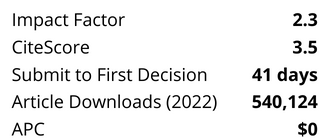Granular activated carbon (GAC) is an alternative filter substrate for municipal water treatment as it provides a high surface area suitable for microbial colonization. The resulting microbial growth promotes biodegradation of organic materials and other contaminants from influent waters. Here, the community structure of the bacteria associated with three GAC and two anthracite filters was examined over 12 months to monitor changes in community composition. Nearly complete 16S rRNA genes were polymerase chain reaction amplified for terminal restriction fragment length polymorphism (T-RFLP) analyses. The identity of commonly occurring peaks was determined through the construction of five representative 16S rRNA clone libraries. Based on sequence analysis, the bacterial communities associated with both anthracite and GAC filters appear to be composed of environmentally derived bacteria, with no known human pathogens. Analysis of similarity tests revealed that significant differences in bacterial community structure occurred over time, with filter substrate playing an important role in determining community composition. GAC filters exhibited the greatest degree of bacterial community variability over the sampling period, while anthracite filters showed a lower degree of variability and less change in community composition. Thus, GAC may be a suitable biologically active filter substrate for the treatment of municipal drinking water.
Skip Nav Destination
Article navigation
Research Article|
February 07 2012
Composition and stability of bacterial communities associated with granular activated carbon and anthracite filters in a pilot scale municipal drinking water treatment facility
T. B. Shirey;
T. B. Shirey
1Department of Biological Sciences, The University of Alabama, Tuscaloosa, AL 35487, USA
Search for other works by this author on:
R. W. Thacker;
R. W. Thacker
2Department of Biology, The University of Alabama at Birmingham, Birmingham, AL, USA
Search for other works by this author on:
J. B. Olson
1Department of Biological Sciences, The University of Alabama, Tuscaloosa, AL 35487, USA
E-mail: jolson@bama.ua.edu
Search for other works by this author on:
J Water Health (2012) 10 (2): 244–255.
Article history
Received:
June 22 2011
Accepted:
December 20 2011
Citation
T. B. Shirey, R. W. Thacker, J. B. Olson; Composition and stability of bacterial communities associated with granular activated carbon and anthracite filters in a pilot scale municipal drinking water treatment facility. J Water Health 1 June 2012; 10 (2): 244–255. doi: https://doi.org/10.2166/wh.2012.092
Download citation file:





%20cropped.png?versionId=5950)